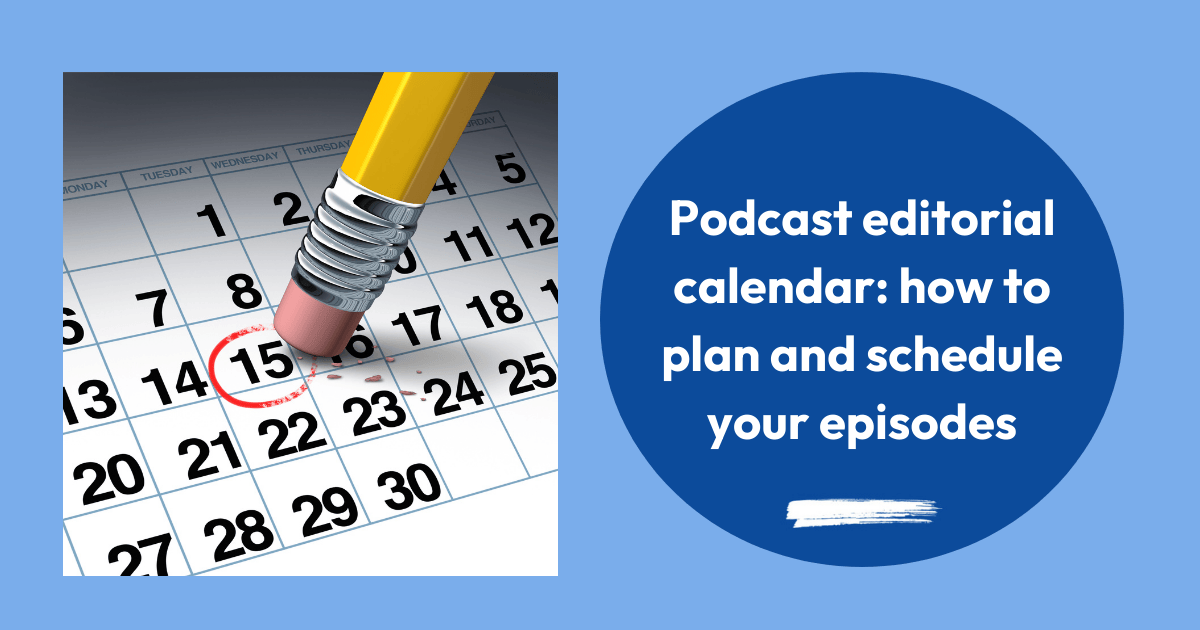
Consistency drives audience growth. Listeners return when new episodes arrive on a predictable cadence—weekly, bi-weekly, or monthly. Without a plan, it’s easy to miss deadlines, scramble for ideas, or burn out.
An editorial calendar helps us translate creative intent into a reliable schedule. It’s more than a date grid—it’s a framework for aligning content with goals, managing production steps, and reducing last-minute stress.
Step 1: define a sustainable release cadence
Start by choosing how often we can realistically publish. Account for research, recording, editing, show notes, and promotion. Time everything you do to create an episode, and then pick your schedule (check Clockify for a free timer)
- Weekly — builds strong audience habits but demands steady time and energy.
- Bi-weekly — balances consistency with sustainability.
- Monthly — allows deeper production but risks losing momentum.
Pick a cadence we can maintain for six months or more. Consistency matters more than frequency.
Step 2: capture and organize episode ideas
Maintain a single source of truth for topics. Use a spreadsheet, notes app (Notejoy), or a project tool like Trello, Notion, or Asana. Tag ideas by theme, format, or season to make planning easier.
Look for patterns we can group into series—four interviews on a niche topic, a short run of “how-to” episodes, or a season exploring one core question. Grouping creates narrative momentum and simplifies booking and research.
Step 3: map production milestones to the calendar
Every episode moves through predictable stages: research, guest outreach, recording, editing, approvals, show notes, artwork, and promotion. Put these as dated tasks on the calendar—working backward from the release date.
For a Monday release, a simple workflow might be:
- Wednesday — research and guest prep complete.
- Thursday/Friday — record and gather assets.
- Weekend — edit, write show notes, finalize artwork, and schedule posts.
Clear checkpoints turn deadlines into daily actions rather than weekend emergencies.
Step 4: plan around themes, seasons, and events
- Seasonal topics (holidays, annual trends, conferences).
- Guest availability or partner campaigns.
- Show milestones (anniversaries, listener Q&As, crossovers).
This forward view keeps episodes relevant and gives us lead time for outreach and production.
Step 5: establish a simple intake and approval process
Bottlenecks often come from missing details—headlines, guest bios, links, or artwork. Create a lightweight intake form and a standard checklist:
- Working title and one-sentence summary.
- Target publish date and episode format.
- Guest details and contact info.
- Required assets (headshot, links, sponsor copy).
- Approvals—who signs off and by when.
Standardizing inputs shortens turnaround and reduces back-and-forth.
Step 6: schedule promotion alongside production
Plan promotion as part of the episode—not an afterthought. On the same calendar, schedule:
- Teasers or trailers before release.
- Social posts and newsletter blurbs on launch day.
- Clips, quotes, or transcripts for ongoing reach.
- Any paid placements or cross-promotions.
Pair each asset with an owner and a due date so the plan survives busy weeks.
Step 7: review performance and adjust
Revisit the calendar monthly or quarterly. Compare planned vs. actual release dates, episode completion time, and basic outcomes—downloads, completion rate, and engagement from clips or posts. Note which formats and topics perform best and adjust the roadmap.
The goal isn’t to follow the plan at all costs—it’s to learn quickly and refine the system.
Templates you can start with
- Cadence tracker — a monthly view with release dates highlighted.
- Episode pipeline — columns for idea → research → recording → edit → scheduled → published.
- Milestone checklist — a reusable list attached to every episode card.
- Promotion calendar — assets and channels mapped to pre- and post-launch windows.
Build consistency through planning
A podcast editorial calendar turns creative ideas into steady output. When we set a sustainable cadence, centralize ideas, map milestones, and schedule promotion, we create room for better conversations—and fewer fire drills. Consistency builds trust, and trust compounds into growth.


